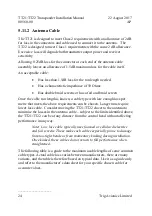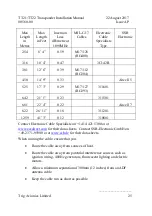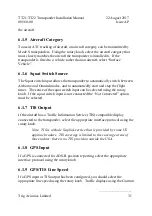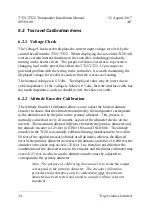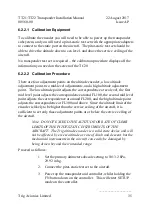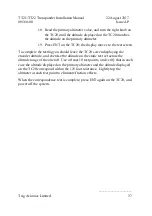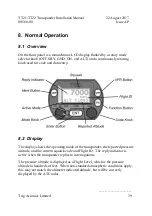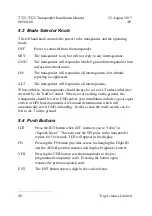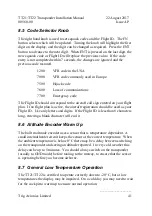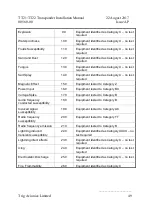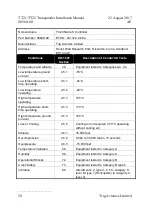
TT21/TT22 Transponder Installation Manual
22 August 2017
00560-00
AP
______________________
38
Trig Avionics Limited
7. Post Installation Checks
Post installation checks should be carried out in accordance with your
certification requirements. These checks should include:
Mode S interrogations to verify correct address programming.
Verification of the reported altitude using a static tester.
Where installed, verification of correct squat switch ground/airborne
indications. In an aircraft with a squat switch, setting the Mode switch
to ALT when the aircraft is on the ground should leave the
transponder in GND mode; when the aircraft becomes airborne, the
mode should switch automatically to ALT.
Interrogations to verify the receiver sensitivity. A Mode S
transponder should have a minimum triggering level (MTL) of
between -77 dBm and -71 dBm. Failure to meet this requirement
usually indicates antenna or coaxial cable problems.
Interrogations to verify the transmitted power. A Class 1 installation
should have no less than 125 Watts at the antenna (and no more than
500 Watts). A Class 2 installation should have no less than 71 Watts
at the antenna (and no more than 500 Watts). Failure to meet this
requirement is also generally due to antenna or wiring issues.
Where installed, verification of the GPS position source and ADS-B
outputs. Whenever a valid position is received by the transponder and
the transponder is in any mode other than Standby, ADS-B Extended
Squitters should be observed on the transponder test set.

